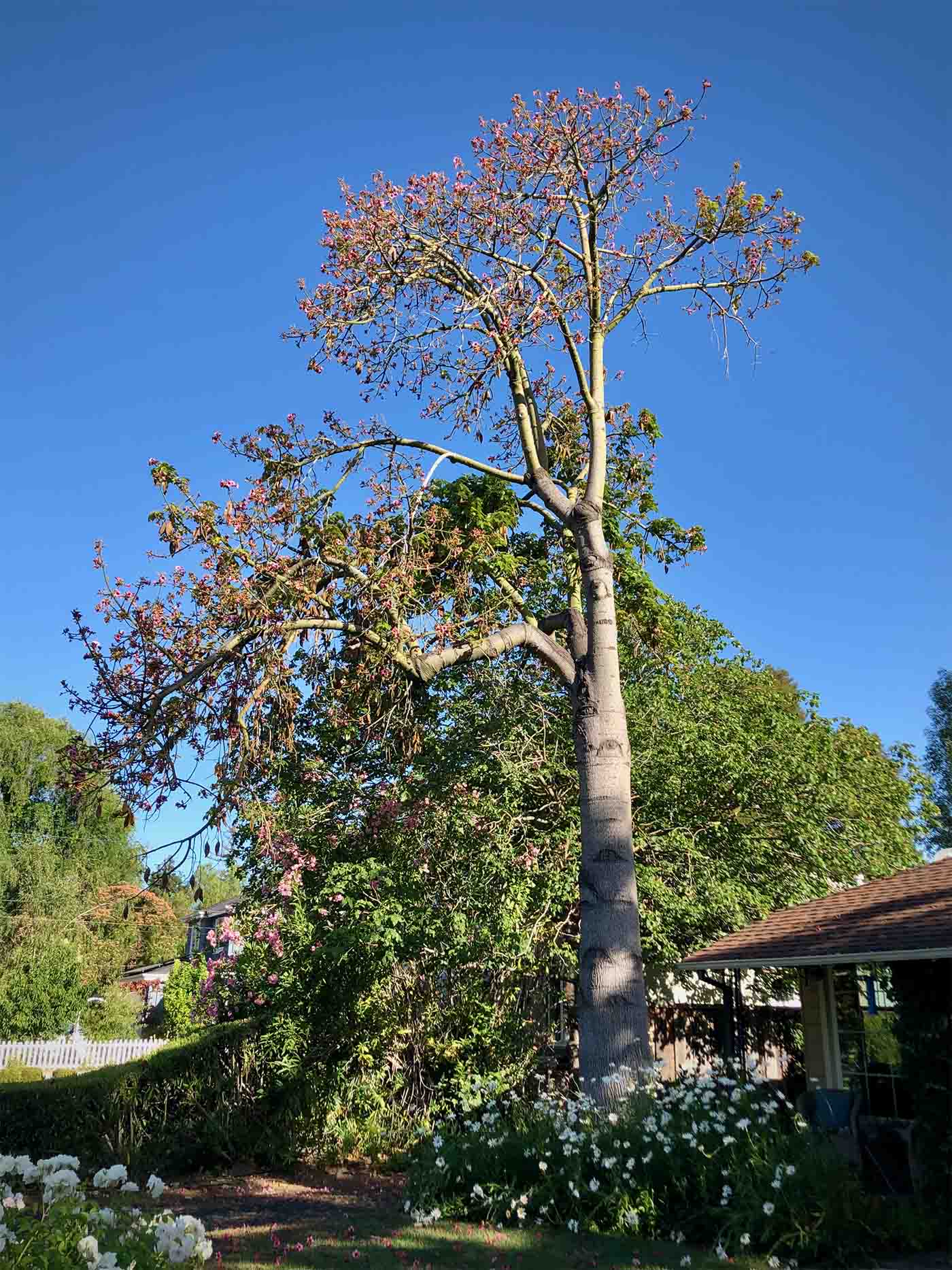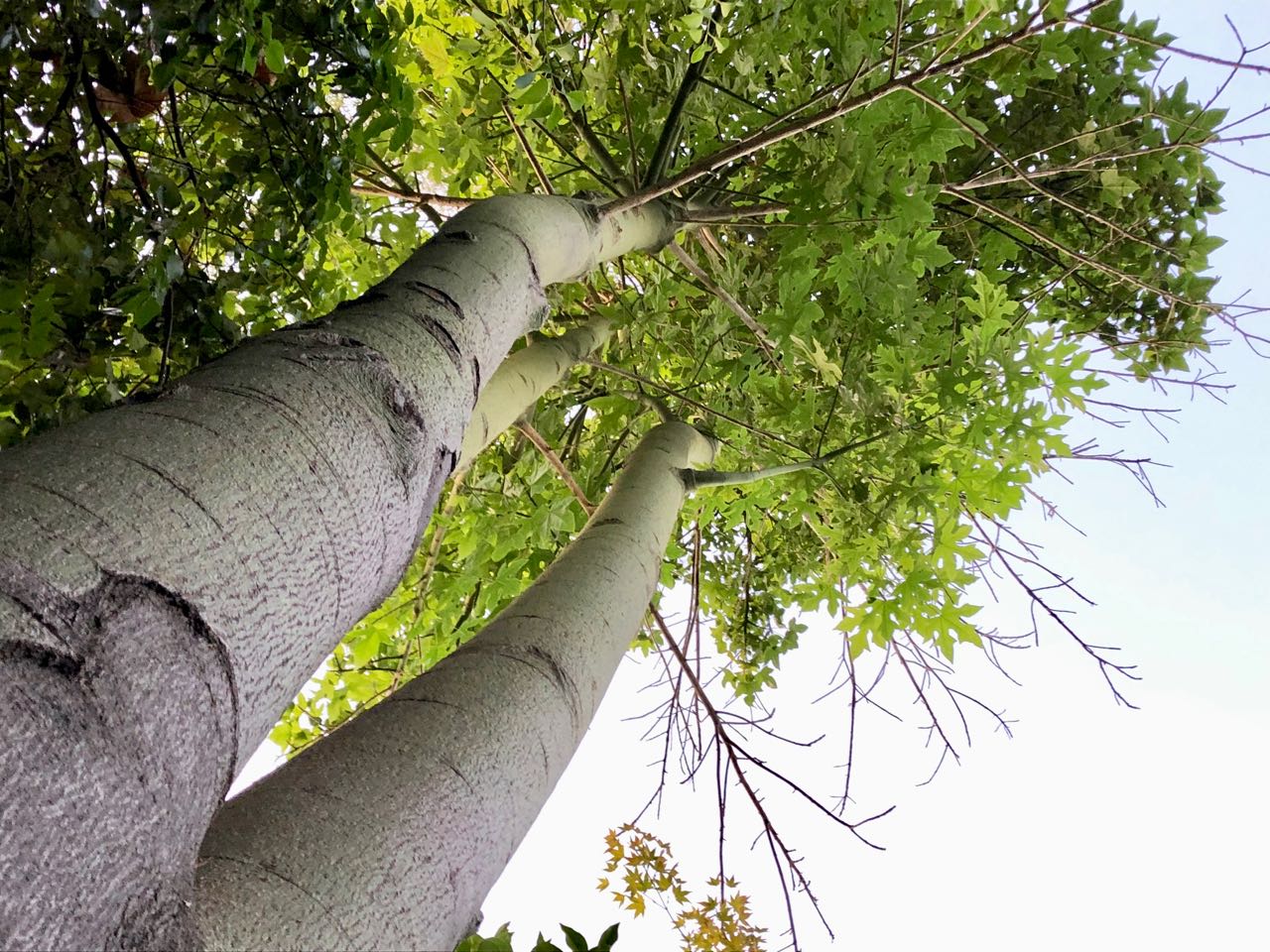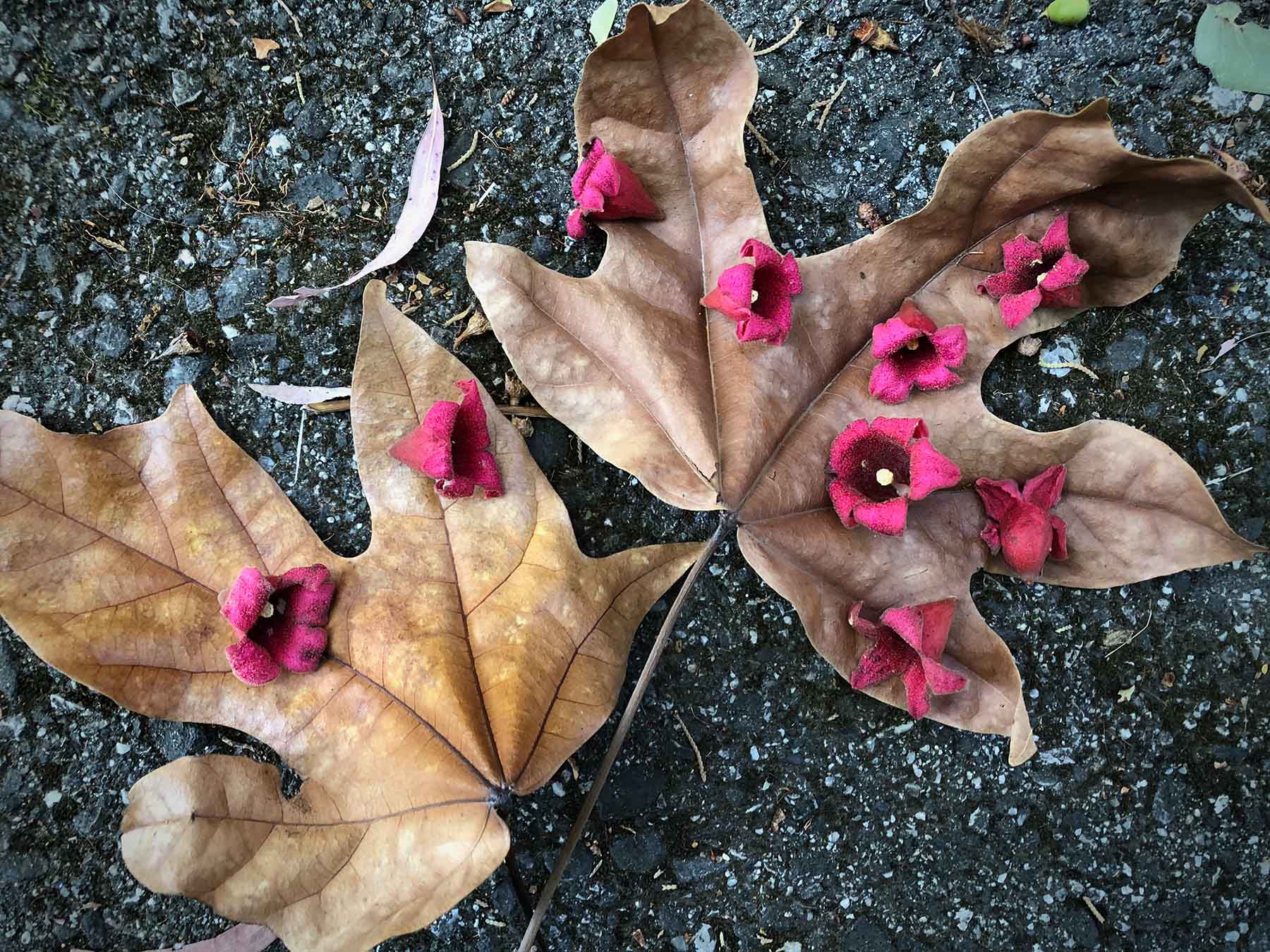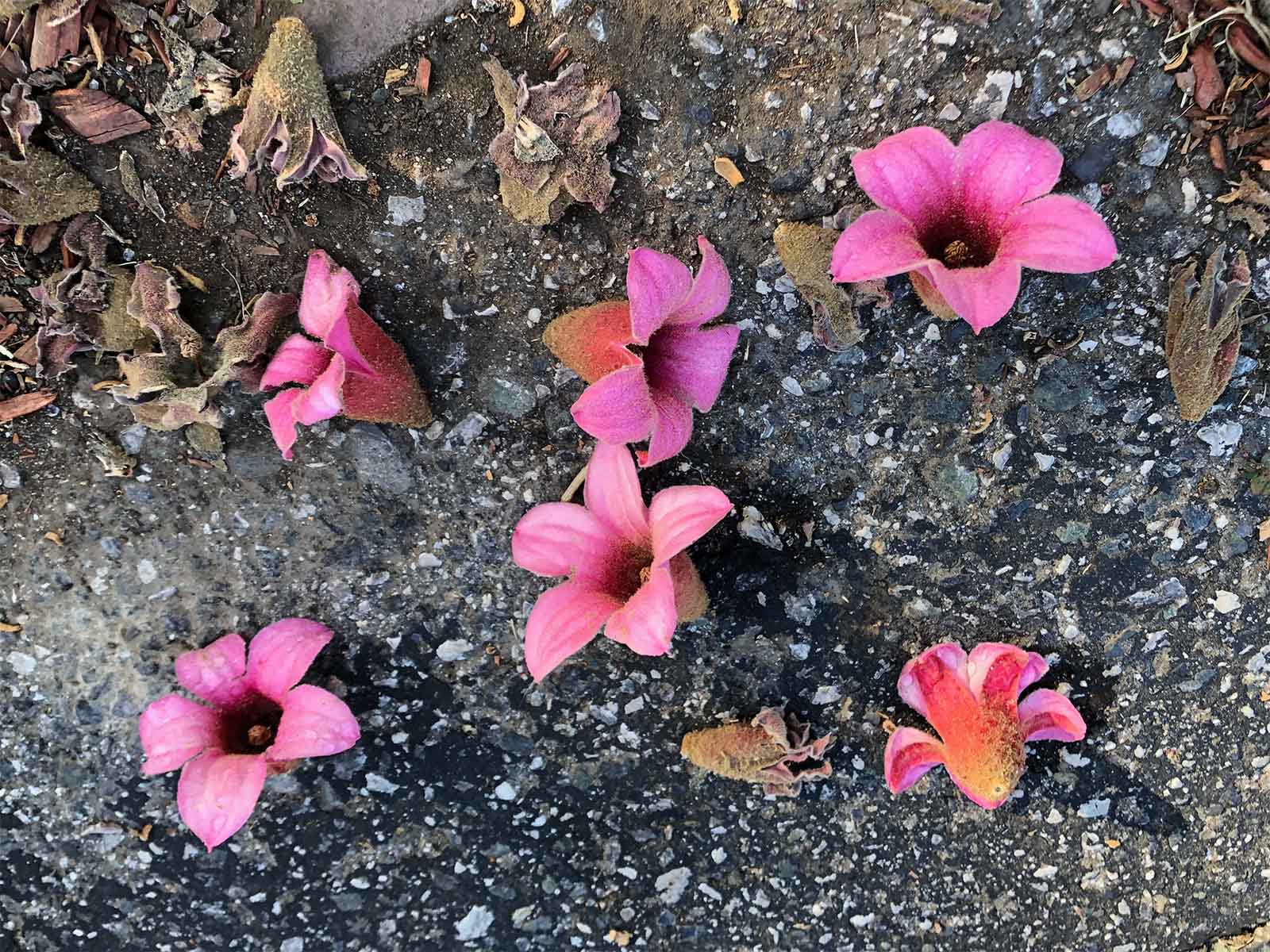Brachychiton discolor
 pink flame tree, lacebark
pink flame tree, lacebark
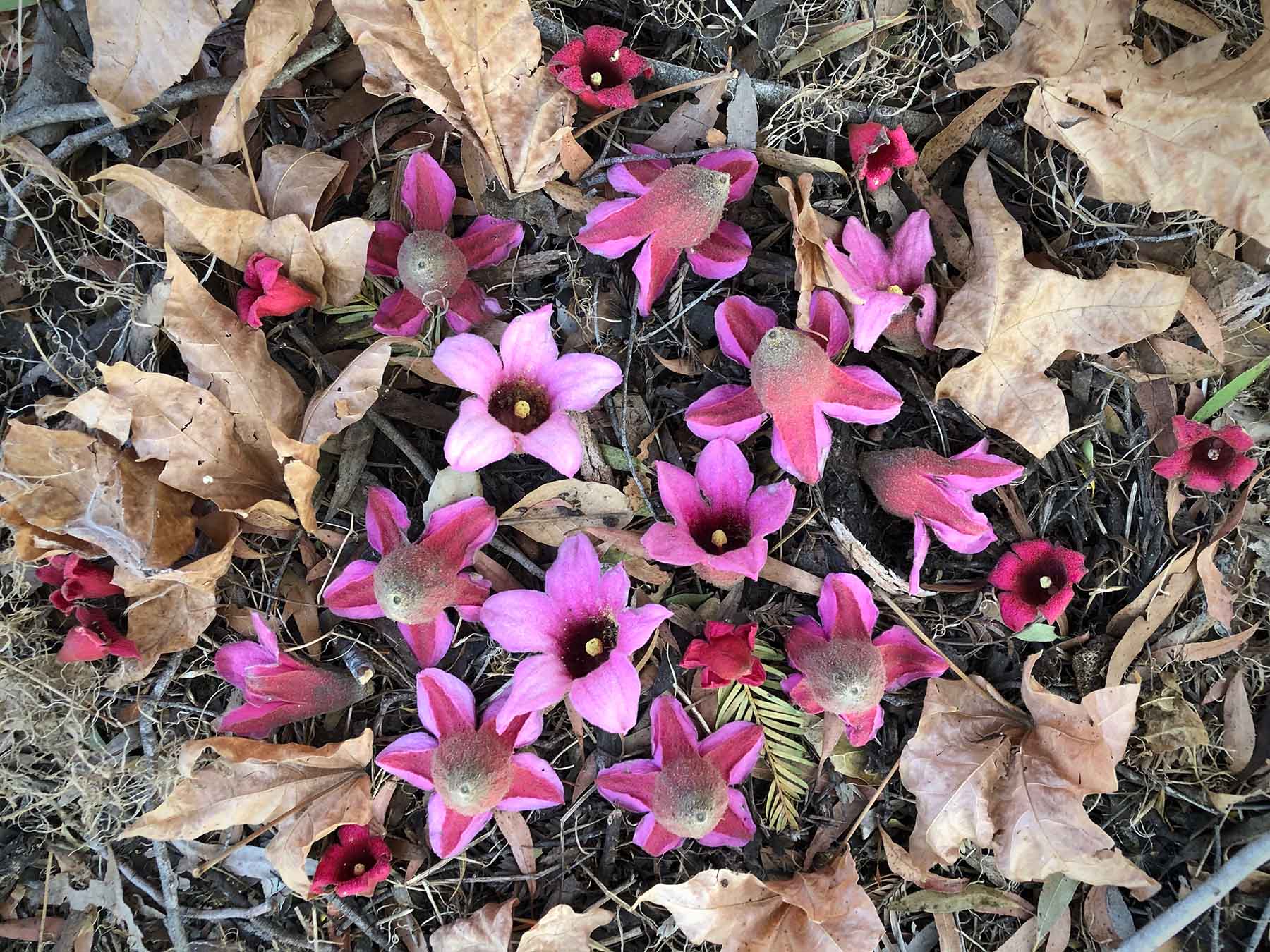
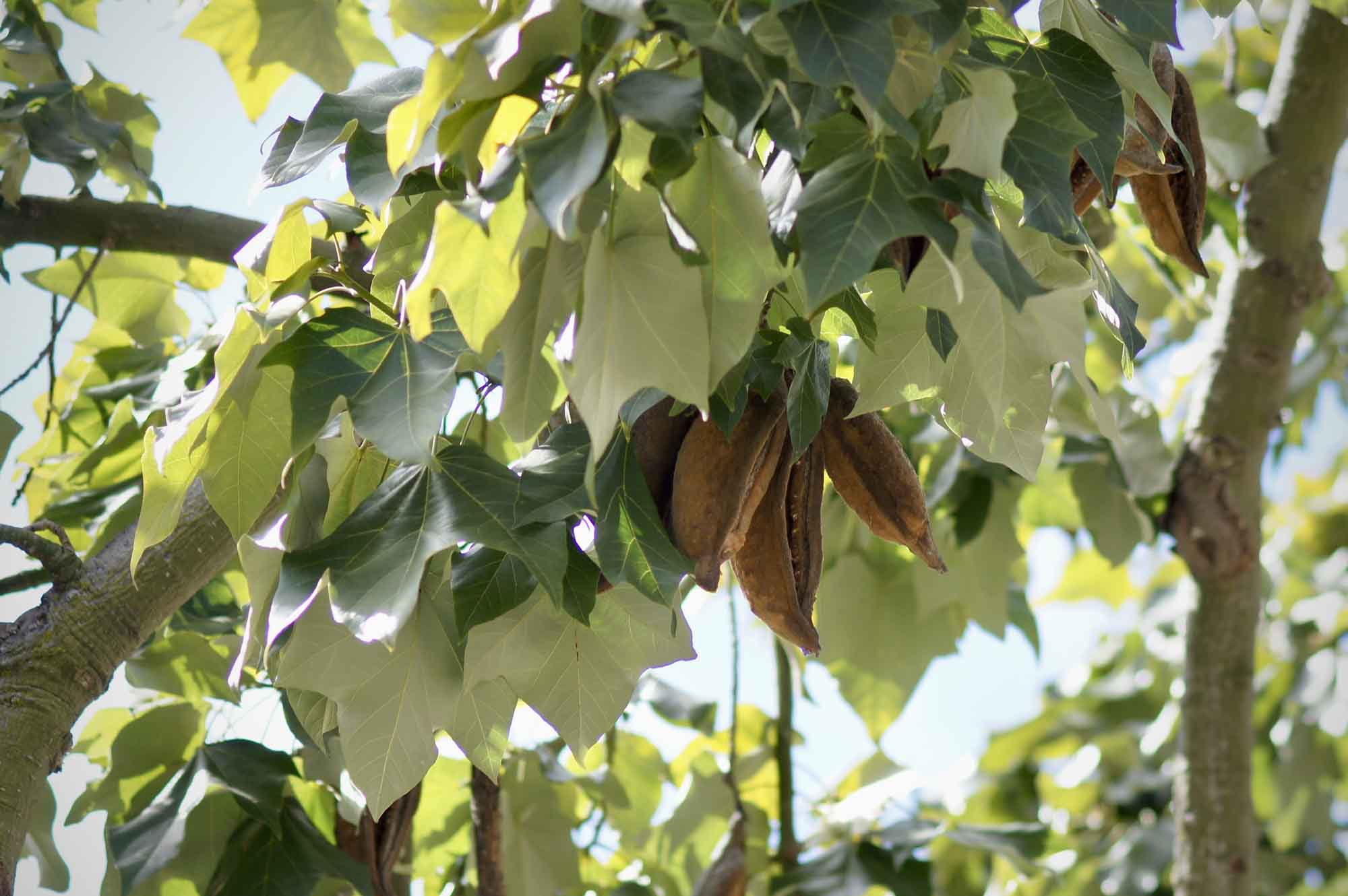
A mature lacebark can easily be distinguished from the Illawarra flame tree by its pink flowers, pods (follicles), and leaves. “Lacebark” indicates the intricate pattern of fissures that develops on older trunks, but in this characteristic it’s not dissimilar to the Illawarra. Look for fuzzy brownish-orange flower buds in the summer, pink later suffusing their tips. As with magnolias, the sepals and petals are indistinguishable. The (usually) five lobes, neatly folded in towards the center, start opening, revealing the pink interior. The outside edges of the opened lobes are the pink parts that had been folded together in bud, and retain their sharp contrast with the rest of the downy exterior. These bell-shaped flowers are about 2 inches wide. Carefully splitting one open reveals vertical nectaries towards the base, two opposite each lobe. Other campus Brachychiton do not have nectaries. The downy pods are canoe shaped, tawny brown, and 4 or 5 inches long.
The mature form of the leaves is maple-like, with five shallow lobes and whitish undersides, but juvenile leaves are deeply incised with five, sometimes three, lobes, some lobes embellished with their own lobes. The difference between juvenile and adult leaves is so pronounced that Ferdinand von Mueller described them as two distinct species in 1858.
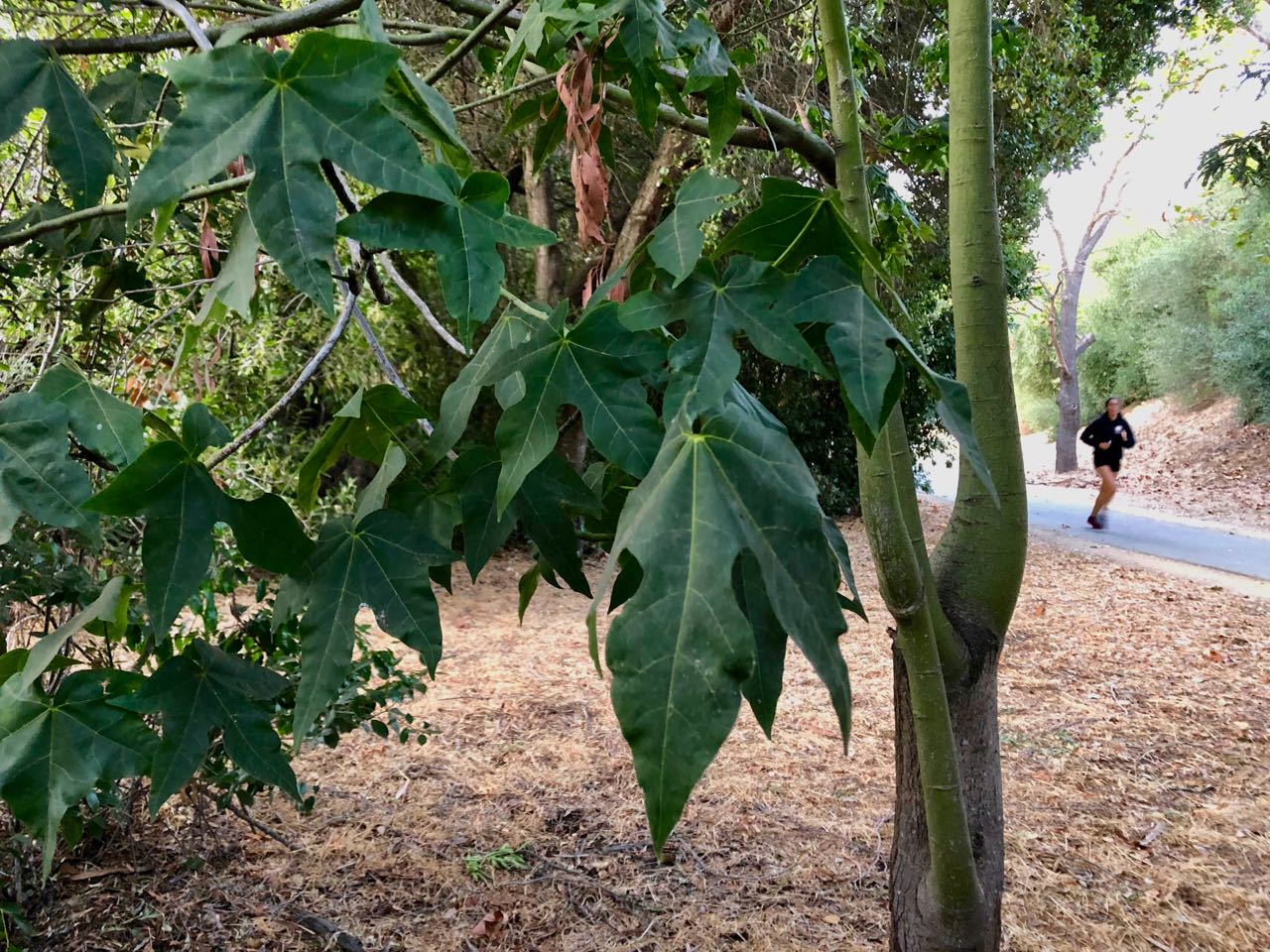
A nine foot tall specimen was planted in the Inner Quad in 2024, under the rather sparse canopy of the floss silk tree. Furnished entirely in five-lobed juvenile leaves, its first flowering will be eagerly anticipated. One in the Stanford Avenue greenbelt behind 836 Santa Fe Avenue grows in the shade of the very rare Eucalyptus aggregata there, but is managing to find its way upwards. It flowers, but pods have not been found. Three youngsters along the Campus Drive side of 563 Salvatierra Walk were an inch in diameter in 2003; they lasted only a couple of years after that.
A large pink flame tree is at 416 O’Keefe Street in Menlo Park. It was planted in 1958 and was 40 feet tall and 2 feet in diameter by 2003. By 2024, the diameter had grown by almost 5 inches. Another is in a raised planter near the north corner of the El Camino Field at Palo Alto High School (map pin).
B. × vinicolor
Just around the corner from the Stanford Avenue greenbelt tree, in the cut-through pedestrian path, is a tall hybrid of pink flame tree with B. acerifolius. It has dark smooth pods, smaller than the fuzzy brown ones of B. discolor, but both produce pink flowers, the hybrid’s a deeper pink, and smaller. The hybrid occurs in nature where its parents’ ranges overlap and is named B. × vinicolor, suggesting flowers the color of wine, not quite evoking the pinkish red of our tree. Cultivar ‘Clarabelle’ is available in the trade and would be a choice selection to round out Stanford’s Brachychiton collection.
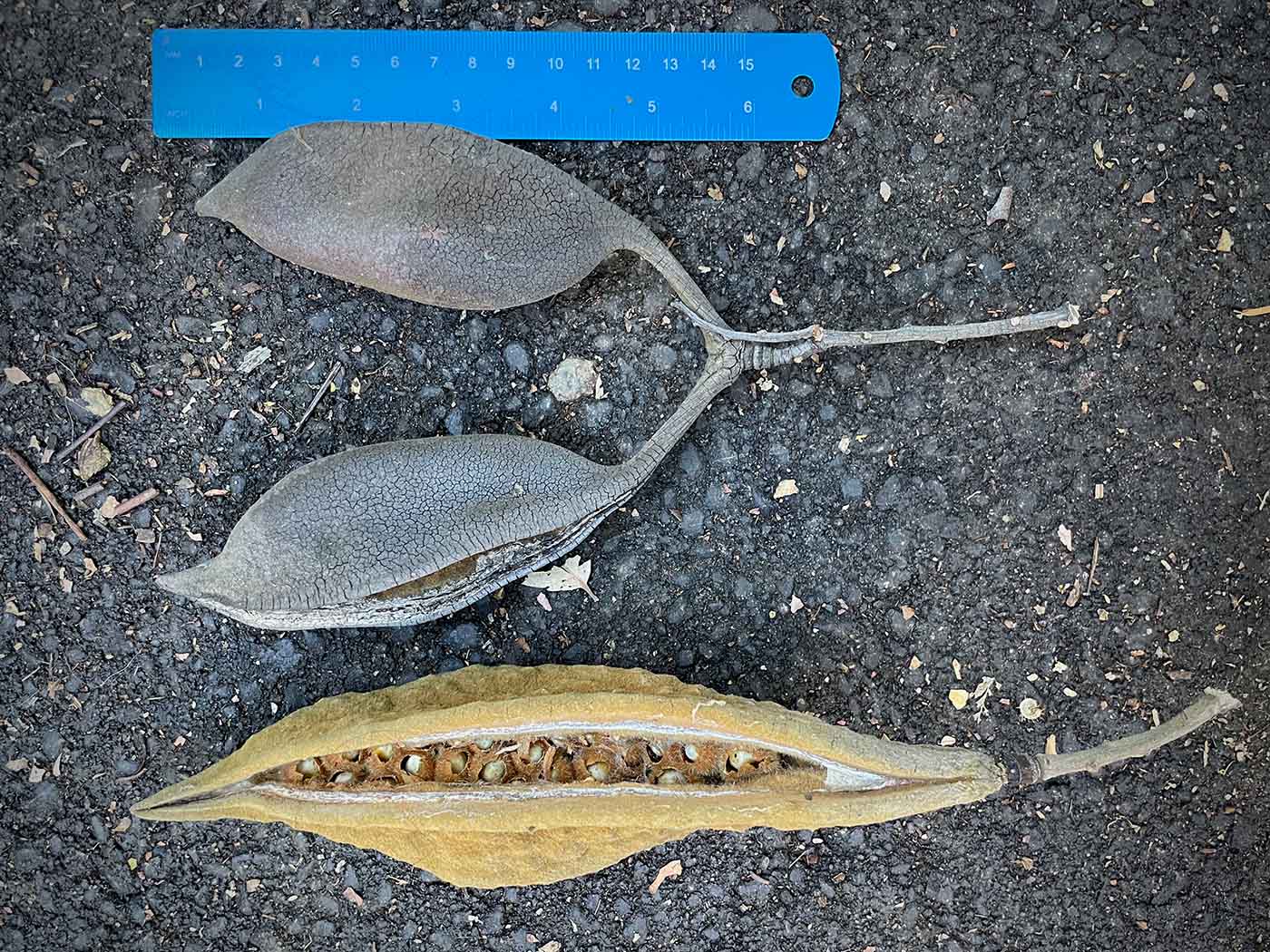

Name derivation: Brachychiton – from Greek, brachys, short and chiton, a tunic, a reference to the coating on the seed; discolor – Latin, of two different colors.
References:
- Main References for New Tree Entries.
- Guymer, G. P. (1988). A Taxonomic Revision of Brachychiton (Sterculiaceae). Australia: CSIRO.
About this Entry: Authored Sep 2024 by Sairus Patel.

